On The Revenant
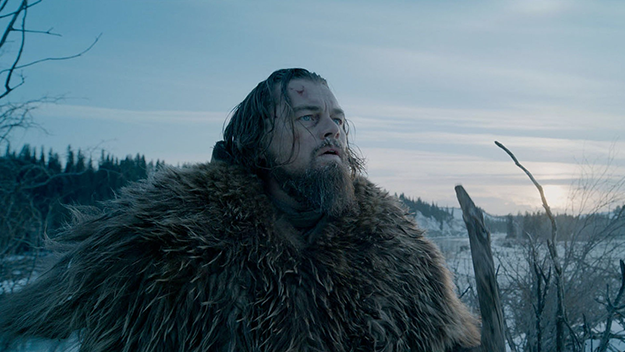
The first time I saw The Revenant, I felt it was the movie of the year, the most beautiful and eloquent, as vital as the desperate breath of characters in the cold clouding the camera lens. I took it for granted as a box-office success and a contender for the Best Picture Oscar. Who had seen such marvels lately in a movie? Perhaps I was living in the past—not just inhabiting frontier existence before 1850, but being reminded of a time when movies put us in the midst of heart-stopping action.
Example? There is a moment when the solitary, horseless Hugh Glass (Leonardo DiCaprio) trudges up a long snowy incline. The tracking camera ascends with him, steady over the rough ground, and letting us feel the uplift of prowess as we might have done for Anthony Mann, Mizoguchi, or Max Ophuls. On the soundtrack there is an unexplained thunder—and in a film with so many off-camera noises and the pulse of breathing, we wonder what this is. Then Glass reaches the plateau and we discover that a herd of buffalo are the source of the sound. Glass beholds the spectacle and the passing detail that on the fringe of the herd a pack of wolves are attacking one buffalo. All in one shot!
The sense of participation was so intense I wanted to cheer, and chase away those wolves. And The Revenant is dependent on this overwhelming commitment to being there in the inhuman cockpit of nature. “Wilderness” is no longer a romantic word for environmentalists to enthuse over in their drawing rooms. It is the inferno that disdains civilization, and offers “beauty” as a torment to our hopes and vanity.
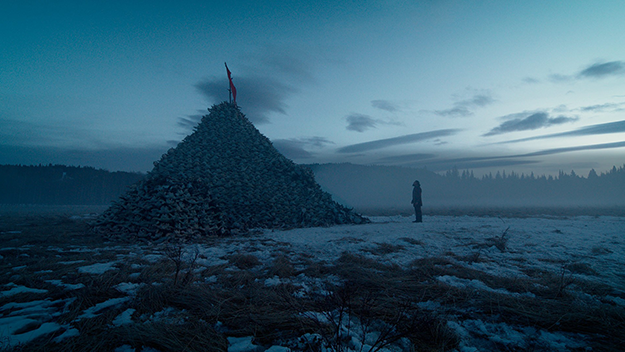
This was a great film to be seeing, one that returned us to an original aspiration in moviemaking: Have you ever seen this? Do you know what the world is like? I was into the passion in Herbert Ponting’s 1911 footage of Antarctica and in the fantasy of what it might be like on Skull Island (King Kong, 1933), that moment when authentic travelers and adventurers (Merian Cooper and Ernest Schoedsack) broke through into a new world of psychic dreamscape.
I had to see the film again for that excitement to be challenged, and for the bleakness of The Revenant to strike home. For the exhilaration in its filmmaking, the awe at seeing this enormous project done, can mask the implacable thrust of the title and of Hugh Glass staring at us from the last shot of the film. The title “The Revenant” does not just celebrate a pioneer of the frontier who has achieved a righteous revenge. It means someone who has come back from the dead and will never be the same again. In so many ways, Glass is a tattered ghost.
I’ll come to the beauty of the film, and its power. But power in a motion picture can be very odd. I was at a critics’ circle meeting where some people deplored The Revenant: it was “too male,” too long, too violent, too excessive, too preposterous—and it seemed to shoot a live horse. What was it doing letting breath fog the lens? Stories about the difficulties in making the film got in the way of its impact.
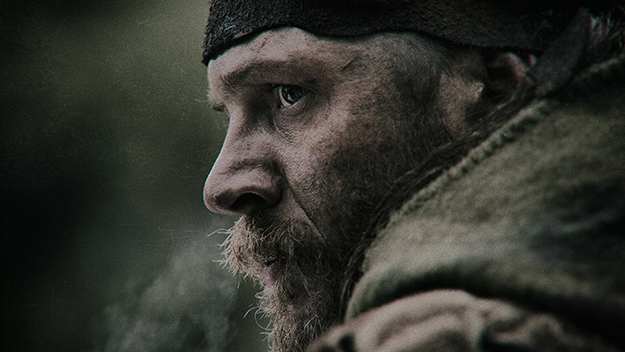
Those critics voted Spotlight best picture of the year. There’s no reason to decry that. But how does a film about institutional rape feel so positive? When will we learn to feel cautious about feeling good? All the President’s Men was once a landmark for brave media rooting out corruption in our state—as if Washington could be educated by a movie! Happy days, and unhappy the fate of easygoing feel-gooders.
The Revenant does not let anyone “feel good” at the close of 156 minutes, and that may sap its box office. Glass has vanquished the malignant Fitzgerald (Tom Hardy), and there is a spirit in our movies, going back to Fritz Lang (from Kriemhild’s Revenge to The Big Heat), that says vengeance cannot be denied. But Glass has lost his Pawnee wife, their son, Hawk, his own physical well-being, and perhaps his mind. Alejandro G. Iñárritu offers no comfort. The Indian woman Glass has saved from one more rape does not become his new consolation. Instead she looks down on his exhausted victory with disdain. He is not rich in pelts or plunder, or valuable land in the wilderness. He has not thought of mineral rights. He has no glimmer of hope—and so his bleak interrogation of the camera is close to desperation. As Lang recognized, vengeance breeds desolation.
Iñárritu does not bother with allegory or contemporary reference, but we have to be fools to miss it. This is an age of entertainment movies (from San Andreas to Mad Max: Fury Road) that posit an end to the world and the fearsome, uncivilized rigors of survival. Isn’t that what is depicted in The Revenant, even if the setting appears to be 1823? So, the wild land has diverse warring interests, accustomed to slaughter, betrayal and capitalist ruthlessness as well as feeble rhetoric about honor. The snow is so ready to break out in blood stains. And the most elemental tie in nature—that of parenthood—is under constant threat. Glass loses his son. The Pawnee chief roams in search of a lost daughter. And the fabled bear in the film has a ferocity that comes from protecting cubs.
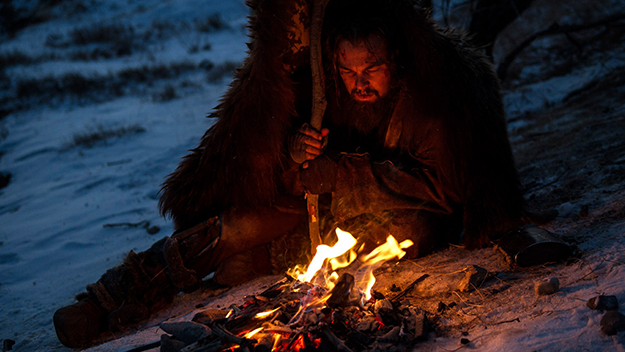
That’s the spirit in Emmanuel Lubezki’s extraordinary cinematography and the film’s wary regard for natural beauty. Photography easily cheats nature: it dwells on the light of magic hours; it clings to the sentiments embodied in landscape, horizon and sky; it is agape at spectacle, scenery and the magnificence of wilderness. From the paintings of the German-born Albert Bierstadt (1830-1902) to the films of Terrence Malick, this mood can co-opt wildness as an idealistic American state of mind. But that ecstatic framing hardly feels the cold, the cruelty, or the isolation, let alone the terror of being hunted by other creatures.
If you want a quick lesson in commitment to external and human nature, just notice how in the bogus, gloating 70mm stupor of in-jokes in The Hateful Eight, its winter prairie is a groomed back lot where a stagecoach (as perky as a Wells Fargo ad) comes bouncing along in a conveniently snow-plowed track!
You can call Lubezki’s work on The Revenant “ravishing.” (He is also Malick’s cameraman of choice.) But The Revenant does not settle for delight, and Lubezki knows that raw light is serving a philosophical vision aware of how close beauty is to the terrible. This place is as harsh and unsupportive as the landscape in Cormac McCarthy’s The Road, even if you yearn to photograph it. But that ambivalence is a part of Iñárritu’s view of life itself. As an end-of-the-world parable apparently set as the United States dawns, this story wonders, is pioneering worth it, or is the wilderness waiting for our departure after a brief stay? That’s what Glass’s gaze asks at the end. Malick is quite calm about the oblivion that may await humans, but Lubezki is torn apart by dread and loss. Even the villain, Fitzgerald, has lost his scalp, and nags at his ruined head (Hardy is so good he is going unnoticed by many, another ghost in the film).
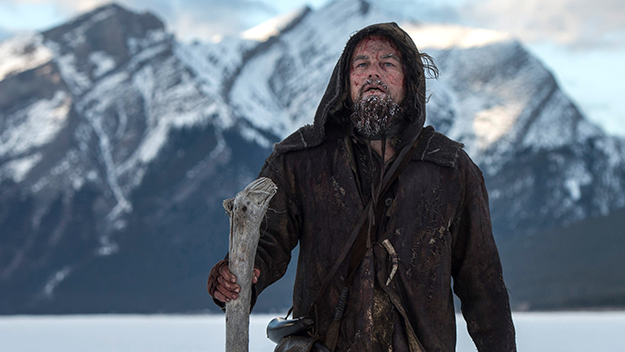
The Revenant is also a meditation on what kind of adventure movie is possible now. Just as Iñárritu’s Birdman deconstructs performance, so The Revenant is tense with self-assessment. We cannot watch without realizing that Lubezki is loyal to natural light as if it was a principle of survival. There are a few interiors and campfires, but we are in a world without artificial or theatrical light. You can see that as an aesthetic decision, but more seriously it addresses mankind’s relationship with nature before electricity and all the technologies that give us the merry schoolboy CGI that rips up the West Coast in San Andreas.
The look of The Revenant feels hallowed and authentic; it is historic but now. No one could say it is done without conjuring. Still, Iñárritu wants to work with as little CGI as possible. When Glass is in the final stages of tracking Fitzgerald, far away behind his lone figure, a small avalanche occurs on a mountainside. Glass stops to notice it. An interviewer asked Iñárritu, whether that was CGI, and the director said, no, a helicopter had been employed to set off a real avalanche.
At a moment of climax Iñárritu chose to have an accident, far from necessary, but eloquent just because of that: nature has its own small gestures of revenge or consequence—accumulated snow must be released, just like human wrath. More than that, the film was ready to go to some lengths to make an event feel real. At a final estimated cost of $135 million, The Revenant doubled its initial budget. This is a commercial enterprise made more perilous by adhering to actuality.
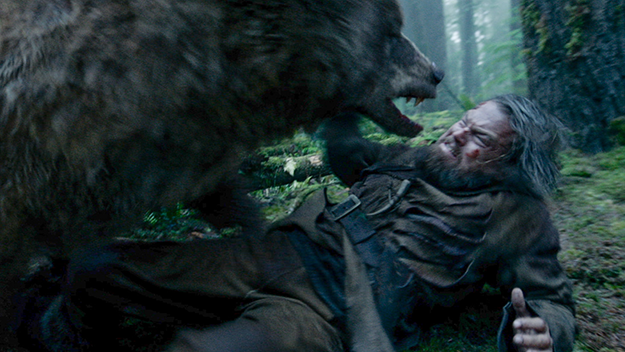
The felt reality is crucial. We regret that physical prowess in films has been compromised by the enhancements of CGI. As I watched The Walk, earlier in the fall, I found the film an awkward whimsy, but its scary walk, its reason for being, was spoiled by our sophistication—well, they can do such things now electronically, so why should I care? There have always been stuntmen, optical subterfuge, and safer ways of doing dangerous things, but there is such a difference between sharing in the peril, and wondering how it was done. Cinema action started to wither when kids were more intrigued by the technology than shaken by the dramatic event.
Iñárritu agonizes over this as much as he does the fate of mankind. Nowhere is that issue more apparent than in Glass’s meeting with the bear. No, a bear was not allowed to attack Leonardo DiCaprio. We recognize the resources that have been employed to make the scene work, and delay an actor’s burial. But the reality is as compelling as the confrontation in Werner Herzog’s Grizzly Man. Glass’s damage is plausible and gruesome, just as the bear’s alien being is evident when she dribbles on Glass, as if adding salt to a meal, or asking, “Play with me.”
I felt I was seeing and caring over a real action as much as I believe in the full-circle plane-landing in Only Angels Have Wings or the ordeal of Lillian Gish in The Wind. The documentary subtext in every fiction film has been held to, and we are left—as moviegoers have always wanted—to sort out the real and the dream in a fever of dread and hope.
The Revenant is a profound adventure, a nearly unique portrait of the extravagant desolation in nature and an absorbing argument over the fate of mankind and its big movies. I wonder how it will do, and how a holiday public will respond to it with a jubilant Star Wars in the next theater. The film may fail in some box-office ways, but that could qualify it in a tradition that includes the varying degrees of “flop” in Intolerance, Greed, Bringing Up Baby, Citizen Kane, The Night of the Hunter, Two-Lane Blacktop, One from the Heart, and Heaven’s Gate.
David Thomson has been contributing to FILM COMMENT since 1979.







